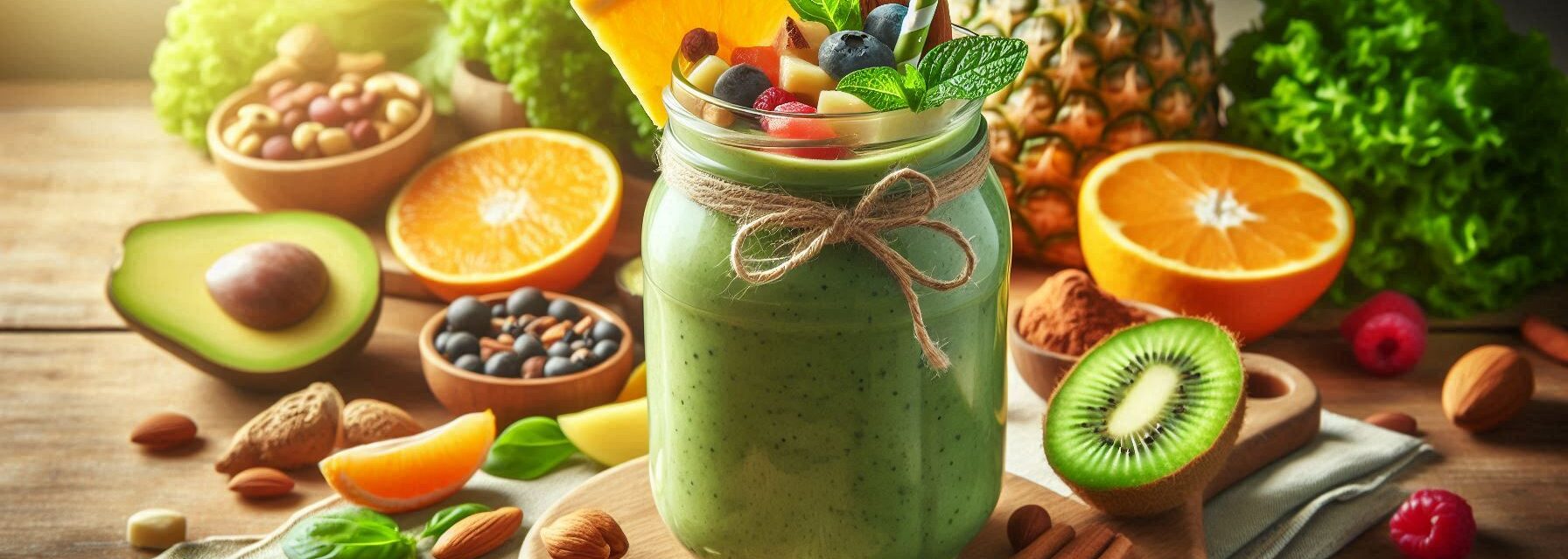Please Note: This post may contain affiliate links. If you click one of them, we may receive a commission at no extra cost to you. As an Amazon Associate, I earn from qualifying purchases.
Smoothies are like the Swiss Army knives of the food world. They can be breakfast, lunch, a snack, or even dessert—all in one convenient cup!
But let’s face it, not all smoothies are created equal. Some taste like a garden exploded in your blender while others might as well be milkshakes with a fancy name.
So how do we craft smoothies that not only tantalize our taste buds but also support our diet goals? Grab your blender and let’s dive into this delicious adventure!
Top Takeaways and Key Concepts
Choose your base wisely: Use unsweetened almond milk, coconut water, or green tea for low-calorie hydration.
Load up on fruits and veggies: Add bananas, berries, spinach, or kale for flavor, nutrients, and antioxidants.
Add protein: Incorporate protein powder, Greek yogurt, or nut butter to stay full and support muscles.
Include healthy fats: Add avocado or chia seeds for omega-3s, creaminess, and satiety in moderation.
Sweeten smartly: Use natural sweeteners like honey or stevia sparingly, or rely on fruit’s natural sweetness.
Summary of This Article
This article provides a practical guide for creating nutritious and delicious smoothies that support weight loss goals. It emphasizes choosing a low-calorie base, incorporating a variety of fruits and vegetables, and adding protein for satiety and muscle support. Healthy fats such as avocado or chia seeds enhance nutrition and texture, while natural sweeteners or fruit prevent unnecessary sugar intake. Following these tips allows for satisfying smoothies that are both tasty and aligned with healthy dietary habits.
1. Choose Your Base Wisely

By the way, did you know that the base of your smoothie is crucial? It’s like choosing the right foundation for your house.
You wouldn’t build a mansion on sand (unless you're planning to have an epic beach party), so don’t start your smoothie with sugary juices or whole milk.
I usually opt for unsweetened almond milk because it tastes great and has fewer calories than regular milk—plus, I get to feel super trendy while drinking it!
Coconut water is another fantastic option; it hydrates you faster than my kids can finish a pizza. And if you're feeling adventurous, throw in some green tea for an antioxidant boost!
Let’s see… If you want something creamy without all the calories, Greek yogurt can add protein and texture too. Just make sure it's plain—trust me; nobody wants their smoothie tasting like dessert when they’re trying to lose weight.
2. Load Up on Fruits and Veggies
Honestly, adding fruits and veggies is where the magic happens! This is not just about sneaking in those greens we were told to eat as kids; it’s about flavor explosion! Think bananas for sweetness (and potassium) or berries for antioxidants—these little gems pack a punch!
Speaking of which, spinach and kale are classic smoothie additions that sound intimidating but blend beautifully without altering the taste much at all.
I remember making my first green smoothie thinking I'd need a chaser afterward—but surprise! The banana masked any hint of “I’m drinking grass.”
And let's not forget frozen fruits—they're perfect for thickening up your concoction while keeping things cool.
Just imagine sipping on a berry blast while pretending you're lounging on a tropical beach instead of sitting in your kitchen wondering why laundry never folds itself.
3. Add Protein Power
Now let’s talk protein—because who doesn’t want muscles like Thor after just one sip? Adding protein powder can help keep you full longer and support muscle recovery if you’ve been hitting the gym harder than usual (or just running after toddlers).
There are many options out there: whey protein, plant-based powders—you name it! Personally, I prefer pea protein because I’m still trying to figure out if I’m allergic to everything else in existence (thanks family genetics!).
Just remember: A little goes a long way; no one wants their smoothie tasting like chalky regret.
If you’re looking for non-powder options, try nut butter or Greek yogurt again—both provide creaminess along with those much-needed proteins without turning your drink into an unrecognizable sludge.
4. Don’t Forget Healthy Fats
Here’s where things get interesting: healthy fats! Yes, fat isn’t always bad—it depends on what kind you’re putting into your body.
Avocado adds creaminess akin to having a spa day inside your mouth while providing healthy monounsaturated fats that make you feel fabulous!
Interestingly enough, chia seeds are another excellent addition—they swell up in liquid making them feel like tiny jelly balls of joy floating around in your drink (who doesn’t love jelly?). Plus they’re packed with omega-3s which sounds impressive enough at parties!
Just remember moderation here too—a tablespoon goes far enough without turning your lovely drink into a high-calorie bombshell that could rival Thanksgiving dinner leftovers.
5. Sweeten Smartly
Okay folks, let’s address sweeteners because nobody wants their smoothie tasting like lawn clippings gone rogue! If needed—and trust me sometimes it is—opt for natural sweeteners instead of refined sugars or syrupy concoctions from questionable sources.
Honey is delightful but use sparingly unless you're aiming for sugar shock central station! Stevia works wonders as well—it's sweeter than candy yet calorie-free—which feels almost too good to be true…but hey—it exists!
Then again…if fruit alone does the trick already then celebrate its natural sweetness rather than overdoing it with additives that would make dentists cringe!
Conclusion: Blend Away!
So there you have it—the blueprint for crafting smoothies that won’t sabotage your diet goals while still being deliciously satisfying!
Now go forth armed with these tips and create smoothies worthy of Instagram fame—or at least ones you'll enjoy sipping through straws while dreaming about summer vacations by sandy beaches.
Suggested Resources:
Healthy Smoothie Recipes
https://www.healthysmoothierecipes.com
The Benefits of Drinking Smoothies
https://www.benefitsofsmoothies.com
How To Make a Green Smoothie
https://www.howtomakeagreenmoothie.com
Frequently Asked Questions
What is the best base for a diet-friendly smoothie?
Unsweetened almond milk, coconut water, or brewed green tea provide hydration and low calories while keeping smoothies flavorful.
How many fruits and vegetables should I add?
Including at least one fruit and one vegetable, such as berries and spinach, boosts nutrients, fiber, and natural sweetness.
Why is protein important in smoothies?
Protein helps keep you full longer, supports muscle repair, and creates a more balanced, satisfying smoothie.
Can healthy fats help with satiety?
Yes, small amounts of avocado, chia seeds, or nut butter add creaminess and healthy fats that promote fullness.
How can I sweeten smoothies without added sugar?
Use fruit for natural sweetness or small amounts of honey or stevia to avoid excess calories and refined sugars.
Are smoothies good for weight loss?
When made with whole foods, protein, and healthy fats, smoothies can support weight loss by providing a balanced, filling meal.
Should I use fresh or frozen ingredients?
Both work well, but frozen fruits and vegetables create a thicker texture and help keep smoothies cold without added ice.

Kevin Collier is a dedicated health enthusiast and writer for FatFAQ.com, where he shares his expertise on weight loss and maintaining a healthy lifestyle. With a focus on practical tips and evidence-based strategies, Kevin aims to inspire readers to achieve their health goals through informed choices. His engaging articles cover nutrition, exercise, and holistic wellness, providing valuable resources for anyone looking to improve their well-being. Passionate about helping others transform their lives, Kevin advocates for sustainable habits that promote lasting health and vitality.




